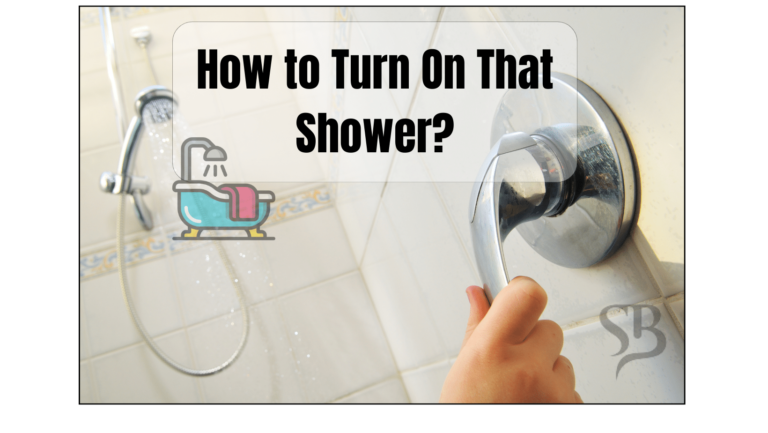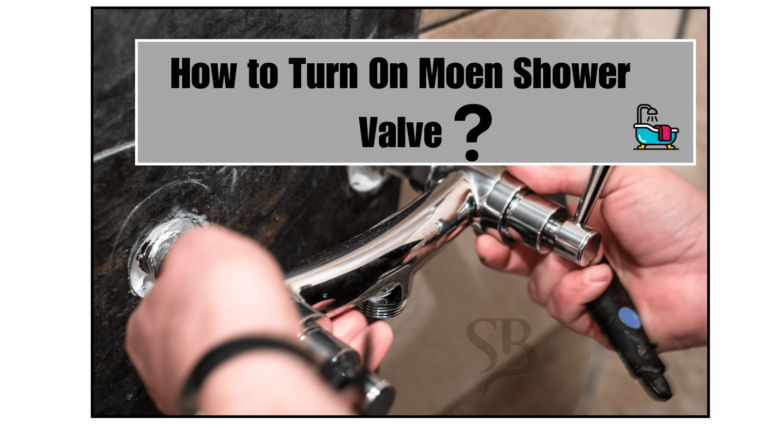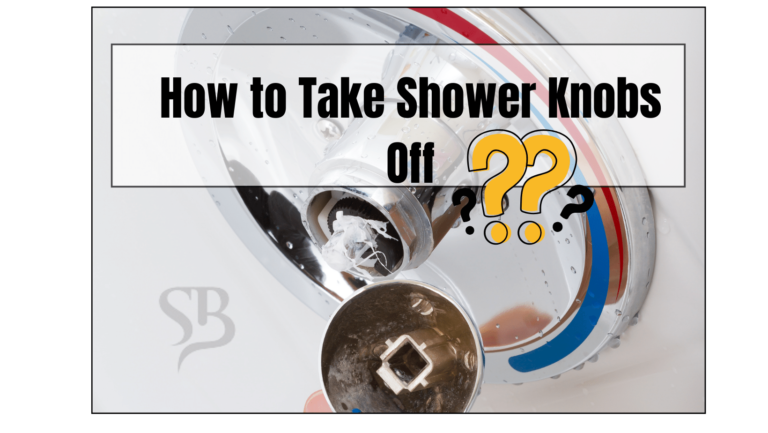It’s usually frustrating when your shower knob turns but no water comes out! The usual culprits of this problem are having a faulty shower valve, a blocked scald-prevention limiter, a loose or stripped knob, low water pressure, or a clogged showerhead.
Therefore, you need to identify the exact cause of the problem to have it fixed properly. This guide highlights some potential causes of the problem and tips on how to fix them quickly.
Why Did My Shower Knob Stop Working?
If you realize that your shower knob doesn’t turn even when you apply force, you may have a broken valve. This issue may also mean you’ll get only cold.
A faulty valve will cause your shower handle to make odd grinding sounds or be permanently stuck whenever you turn the handle. A broken valve can also cause other related problems, such as low water pressure or water flow.
Why Is There No Water Coming Out of My Shower?
When a shower knob turns but no water comes out, it usually indicates a problem with the shower’s plumbing or the valve mechanism.
The most common issue is a malfunctioning diverter valve, which directs water to the showerhead. It may be stuck or damaged, preventing water from flowing to the showerhead.
Another possibility is a clog or blockage in the water supply lines or showerhead itself, restricting water flow. In some cases, there could be a problem with the water pressure in your plumbing system.
To address this issue, it’s advisable to turn off the water supply to the shower, disassemble the valve, and inspect for any visible problems. If you’re not comfortable with DIY plumbing repairs, it’s best to consult a professional plumber to diagnose and fix the issue properly.
Here are the most common reasons your shower knob turn but no water comes out:
1. Loose Knob
Some people don’t realize that corrosion is a big factor in loose shower knobs. If you have a cracked shower handle, you should consider replacing it.
The handle can become loose when you let the water run through your shower or tub.
It may be that corrosion has caused the threads that hold the knob in place to be damaged. When a valve stem is damaged, it may cause the knob to become loose.
If the knob on the showerhead is loose, it should turn the shower in the right direction, but water may not flow down the showerhead. Therefore, you need to first check that the knob is tight and the turning is smooth.
Solution
It is best to tighten the screw that holds the handle in place or replace it as soon as possible. First, try to tighten the screw holding the knob in place.
To access the screw that holds the knob in place, you’ll need to remove the small metal plate that covers the handle — or, if the knob is older, simply replace it. If you find the screw that holds the handle in place, tighten it with an adjustable wrench.
Tighten the knob by following these steps:
You’ll need a Philips screwdriver flat, a head screwdriver, or a hex wrench to tighten the loose knob.
If you don’t have any of the above tools, you may need the SWANLAKE 117PCS Magnetic Screwdriver Set, which comes with pieces of Philips screwdrivers, hex nuts, and various other screws. Once you get the right screwdriver, you should go ahead and tighten the knob using the steps below:
- Turn off the shower water
- Uncover the hidden screw by lifting the covering on the shower knob using a flathead screwdriver
- Use the wrench or Philip screwdriver to tighten the knob’s screws
- Put back the covering of the knob and rest to see whether the water comes out.

2. Stripped Knob
It’s a fairly common problem that can happen to any bathroom faucet. It happens to almost all faucet handles, and repairing it will take just as quickly as replacing a sink.
It only takes a few screwdrivers and a wrench and usually costs about $20. Before we start, you may wonder what caused your faucet handle to spin on its end or if the handle was damaged.
It’s mostly a result of excessive wear and tear on the stem of the faucet or on the cartridge that holds the water. It’s like a simple rubber band that attaches to the handle of a faucet.
The cartridge and the handle work together to control the water flow. That means the handle will become loose and spin on the end of the stem wears down.
Sometimes, a shower knob turns, but no water pours out, and it is not because there is a loose knob but because the knob is often stripped.
If you cannot fix the problem by tightening the knob, consider the following fix or replace the old knob.
Solution
Follow these easy steps to solve the problem:
- Lift the covering on the knob with an Allen wrench
- Pull the shower knob out and inspect the problem
- If you notice the splines on the knob are stripped, tie a plumber’s tape around it
- Apply some plumber’s tape
- Screw your shower knob back into place and retest it
This solution is only possible if the splines are not badly stripped. Otherwise, if the stripping is extensive, you’ll need to buy a new shower now to avoid similar issues in the future.
3. Clogged Shower Head
If you have hard water in your water supply, its minerals can cause clogs in your water heater and water supply lines. The Calcium and magnesium in hard water can settle on the bottom of your water heater tank.
They can also accumulate on the inside of your pipes that supply water to your shower. If you don’t get any water out of the shower, it could indicate that your water heater is completely clogged.
Solution
You should disassemble the showerhead and remove the rust using a remover like EVAPO Rust ER012. Rinse the showerhead thoroughly with clean water and a soft brush. Put it back on the mount and turn the knob to see whether the water comes out.
Some water heaters have trouble with hard water. The hard water problems can affect not just your showerhead but also your other bathroom faucets. It’s best to have a professional do the job for you.
But it would be best if you also considered installing a water softener at home to avoid future water supply line blockages.
If you start using softer water, you’ll need to have your tank’s anode rod checked more often because even very soft water, like very hard water, can also corrode your anode rods. It’s best to check it at least once a year.
4. Faulty Shower Valve
If the valve is faulty, it will not allow water to come out of the valve. So, check the stem of the valve to see if it is in good condition. If it isn’t, you may have to replace the valve. Also, check for signs that rust has gotten on the valve stem because rust can cause obstructions.
Solution
If the rust is causing the valve to function improperly, try rubbing it with a wire brush like the Lavaxon Wire Brush to remove it. If you see a badly worn-out valve stem, have it replaced.
5. Low Water Pressure
Sometimes, you have low water pressure in your shower because of a clogged showerhead, but that’s not the only cause. You may also have a defective pressure regulator or a leaking water pipe. After you find out the source of the low pressure, you should be able to take the appropriate action.
Solution
You must determine what’s causing your water pressure to drop while you are taking a shower, and if possible, change the water pressure regulator.
If you have a faulty valve or a faulty water pressure regulator, you should preferably replace it. Contact a plumber if you cannot figure out what is causing the low water issue.

6. Leaky Pipe
It’s not normal for your showerhead to continue dripping water long after you have used it. It’s much more common for valves in shower heads to break or become loose.
Leaks from pipes that come into the shower are a good sign that a pipe is leaking; a leaking valve can cause your shower to stop working entirely. If you fix any of these issues immediately after you notice them, you will have a long-lasting shower faucet system.
There is a possibility that a leaking faucet or shower pipe occurs, and in that case, the shower knob won’t allow water to come out. You could be losing a lot of water without even knowing it, and that will cost you money.
Some of the common causes of leaking pipes include worn-out valves, pipe cracks, loose washers, and water supply problems. The good thing is can notice the leaking pipe issue even before you try to turn the shower knob and fail to get water. Visible bathroom stains and moldy smells in the bathroom are clear indicators that you may be experiencing pipe leakages.
Solution
Since the causes of such problems vary, you need to address each problem individually. If your DIY expertise doesn’t come in handy in fixing the issue, contact a qualified plumber in your area.
7. Blocked Pipe
Water will not flow if the pipes are blocked the same way as the water won’t flow when you have a clogged showerhead. The causes of clogging, in this case, are often the same as with a clogged showerhead. However, trying to unclog a clogged shower pipe might be more challenging than when unclogging a showerhead.
Solution
Consider calling a plumber to help de-clog a blocked pipe.
8. Defective Scald-Prevention Limiter
Suppose you notice that you only get cold water every time you turn the knob, not hot water. In that case, there is a possibility that the scald-prevention limiter or the temperature adjustment feature is not functioning properly. That means it’s damaged and has to be replaced.
However, it’s important to note that you might not get hot water when you turn the knob on your shower because you don’t have a heating energy source. The source will depend on whether you rely on gas water or an electric heater, even if the water pressure is fine.
A tripped circuit breaker or defective fuse can cause hot shower problems in electric water heaters. Either switch it “ON” for tripped circuit breakers or replace the blown fuse to start enjoying the hot water shower again when you turn the shower knob. Gas water issues often occur when you have run out of gas.
Solution
Remove the knob of your shower to check the condition of the scald-prevention limiter. If you notice that the limiter is out of position, try readjusting it to fix the problem.
But, if it’s in place yet not functioning properly, have it replaced. However, you may have to contact a plumber to resolve the problem because the issue could be something to do with the heater and not your temperature adjustment control.
9. A Bad Anode Rod
Anode rods act like an invisible shield to protect the internal parts of water heaters from rust. An anode rod is a cylindrical piece of metal that sits on the top of a water heater to prevent it from corroding. It’s often made from thin steel or aluminum and screws into the top of the tank.
Its only purpose is to trap and hold oxidizing elements that would otherwise cause rust to form on the inside of the tank.
In other words, the anode rod will eventually stop working because corrosion-causing elements will cause it to fail. Its purpose is to hold metal ions in place during corrosion-causing events, allowing your water heater to last longer on its behalf.
Meaning if you wait too long to replace the rod that’s getting thinner, your water heater will fail more quickly. If you don’t replace the anode rod before it fails, you will have shower problems, such as the failure of water to come out when you turn the knob and foul-smelling water.
Solution
The rods should be inspected every three to four years. If your anode rod is down to half its original diameter, it’s time to have it replaced.
It’s important to remember that the rods work best in homes with moderate water hardness and not in places such as Salt Lake City and Utah that experience very hard water. The water in SLC is estimated to be extremely hard, with an average of 13 grains per gallon.
Hard water can cause corrosive problems faster on the anode rods. So, your water heater repair expert can easily replace it if the anode rod has started corroding to avoid issues with the water coming out of your shower.
Wrap Up
The reason why water is not coming out of your shower even when the knob turns may be clogged showerheads, issues with the showerhead’s attachment to the shower arm, or more serious problems that affect your home’s piping system.
You need to diagnose the potential issues individually and try the above-mentioned solutions to fix the issue. But, if the problem is beyond your DIY expertise, consider contacting a qualified plumber to avoid escalating the problem into a costly plumbing issue down the road.







